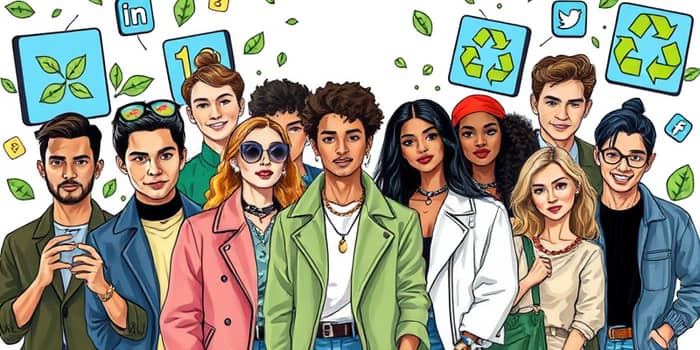
In a world where tradition meets transformation, luxury brands are experiencing a powerful revival fueled by Generation Z’s distinct values and spending habits. As this cohort ascends into the heart of high-end markets, it is reshaping how brands define prestige, authenticity, and innovation.
The influence of Gen Z (born 1997–2012) on the luxury segment is undeniable. By 2025, this group is projected to hold over 360 billion dollars of disposable income, making them pivotal to brand strategies. Their purchasing power is not only in raw numbers but in the velocity and frequency of transactions: averaging 16 luxury items per year.
Despite a 3% market contraction in early 2025, Gen Z and Millennials have bucked the trend, driving growth through frictionless e-commerce and social media shopability. Younger shoppers now make their first luxury purchase earlier than any prior generation, leveraging global digital storefronts and influencer-fueled drop culture.
Understanding what motivates this generation is essential for any brand seeking long-term loyalty. Gen Z prioritizes purpose alongside product, blending ethical considerations with aesthetic aspirations. They view luxury not merely as a status symbol, but as an extension of their personal values.
Moreover, Gen Z treats luxury as an investment in durability. Over 64% are willing to pay higher prices for items built to last, demonstrating a conscious luxury that resonates with values mindset.
Industry leaders have adopted varied approaches to capture this audience. Success often hinges on integrating digital innovation with brand heritage, creating a bridge between legacy and modernity.
These tactics emphasize a legacy craftsmanship meets modern digital demands approach, ensuring that tradition and technology enhance each other rather than compete.
Data-driven insights guide decisions and allocate resources effectively. A concise overview of critical metrics provides a snapshot of Gen Z’s footprint in luxury.
As Generation Z’s influence grows, brands face the critical task of evolving without losing their essence. They must maintain a strategic balance between exclusivity and inclusivity to avoid alienating long-time patrons.
Key areas for innovation include genuine sustainability action—moving beyond greenwashing—and truly seamless omnichannel journeys. Brands that excel in these domains will craft deeper and longer-lasting relationships with Gen Z consumers.
Operationalizing these insights requires clear priorities and dedicated investment. Brands can begin by focusing on tangible actions that align with Gen Z values and expectations.
Generation Z is not just the next wave of consumers; they are active architects of tomorrow’s luxury landscape. By aligning brand identity with Gen Z’s expectations—prioritizing purpose, innovation, and authenticity—luxury houses can secure enduring relevance.
Embracing this shift offers an opportunity to craft a future where prestige is measured not only by price tags, but by the positive impact on people, communities, and the planet. Brands that listen, adapt, and lead with purpose will thrive in this new era of luxury.
References













